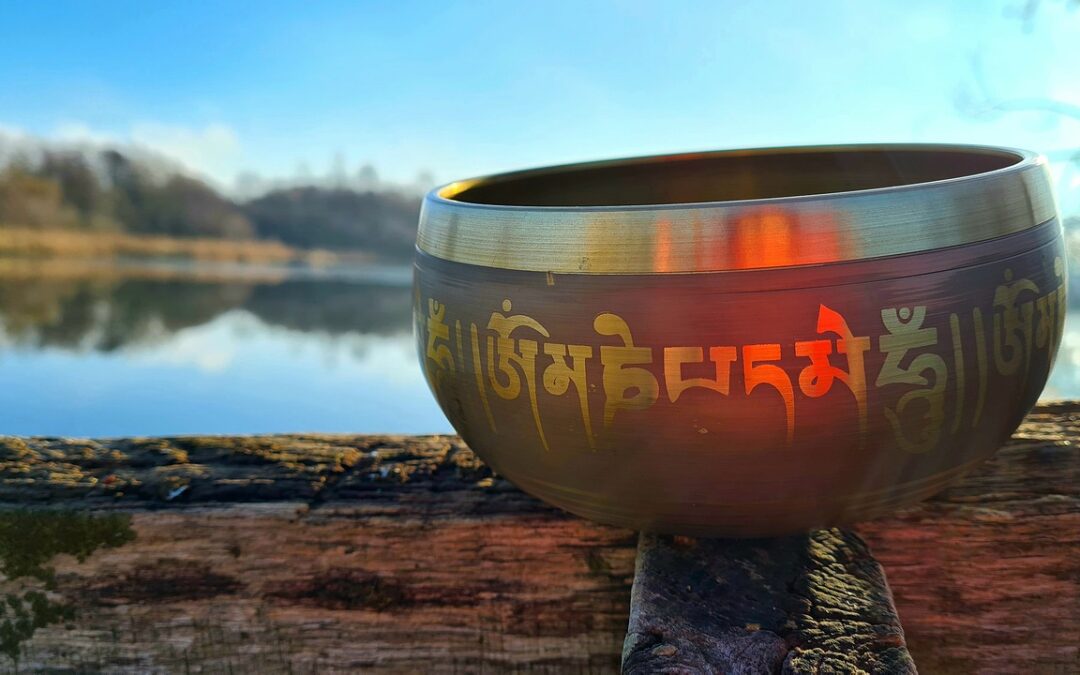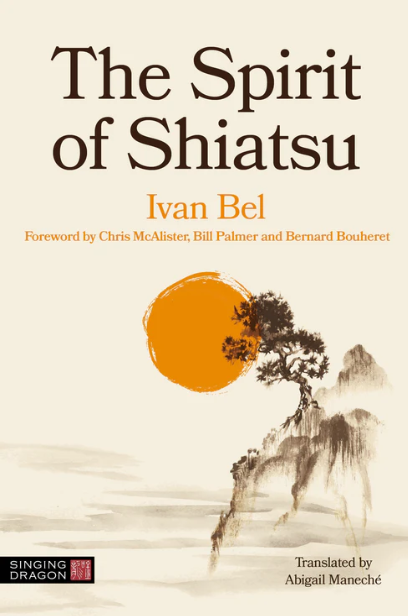In Shiatsu, we don’t often talk about bones. And yet they are the foundations of our body, the solid, tangible base on which our muscles are articulated and our organs housed. What’s more, the large bones also produce blood cells and are themselves irrigated at the surface, so they play a vital role in our health. Finally, in Chinese medicine, they are linked to the Kidney and possess the quiet strength of will. In this article, the author, Dawn Oei, shares with us her passion for bones and, as a Shiatsu practitioner and teacher, also gives us her tips and tricks for keeping them in good condition.
Bones fascinate me. When I think about bones, they immediately conjure up these associations:
- Bone holds memory, trauma and shock
- Bone is deep in our Essence (associated with the Kidney and Bladder meridians)
- Bone is strong until it breaks…but has the capacity to rebuild and grow again
- Bone is fascia and connects the body from head to toe
- Reverberates. Sends messages and communicates with the rest of the body
- Bone understands
- Bone needs to be nourished
- Bone is alive
How do you see bones? What do you feel ‘in your bones’ about bones?
Essence, Yin and Yang

I learned from studying Shiatsu and Traditional Chinese Medicine (TCM) that our bones (physically and energetically) come from the deepest, most dense place in our bodies. Bone health and development depends on our Kidney Essence. The Kidneys hold Essence (Jing) and pre-natal Qi to produce marrow – which creates and supports our bones and teeth.
Together with the Brain, Marrow, Uterus, Blood Vessels and Gall Bladder, our Bones are included as one of the Extraordinary Fu organs, which are also called the ‘Curious Organs’. According to the Huangdi Nei Jing (The Yellow Emperor’s Classic of Internal Medicine), these Curious Organs resemble the Yang Organs (LI, ST, SI, GB) in form, but the Yin Organs (LU, SP, HT, KD, LV) in function. They store rather than disperse whereas the Yang organs disperse and do not store.[1]
Bones store Yin essence. These Extraordinary Fu enable us to connect at a level more fundamental and more primitive than that encompassed by the ordinary Zang (Yin) and Fu (Yang) organs.[2] Yin represents the passive, dark, cold, and internal aspects of the body, while Yang represents the active, light, warm, and external aspects. An imbalance of Yin and Yang can cause a blockage of Qi and result in disease.
Bones and the Water Element
Bones are fundamentally connected to the Water Element meridians of the Kidneys and Bladder (associated with the season of winter). The Kidneys store the Will and influence our life journey from birth and development to maturation, and they govern every effort that we make. The Bladder meridian embodies impetus, willpower and a sense of determination to do, to survive, to keep going, fight or flight, and to start again from the beginning.
The emotions of the Kidneys and Bladder include courage and fear, and govern the choices that we make. What spurs us on to take a leap of faith and what holds us back? When we are faced with situations that feel difficult to bear, we might experience pain in the hips, knees, back of our legs, or feel weaker under foot. Can we find the courage to believe and trust that the things that make us fearful could also serve as a direction?
More about Bones
Our skeleton can hold our entire weight but is actually very light. Do you know that bone constitutes only 13% of our total weight (10-11 kg for an average person) whereas the muscles make up 38% of our weight? [3] Bone reaches maximum mass
between the ages of 25 and 30. The feet, though they constitute only 3% of the body’s weight, support 97% of that weight. They balance our weight in standing and ‘through the complex and dynamic living interactions of the bones, ligaments, tendons, and muscles…allow us to walk, to run, to jump, and to dance’. [4]
Bone has a memory of grief. Grief that I have experienced, in relation to close family and friends, has felt bone deep. Like being in winter, the body favours deep rest, space for quiet and stillness, connecting to source (Essence), and deciding what is a priority in life.
Many of our experiences are held deep in our bones and in the fascia (connective tissue), from inherited and ancestral / pre-natal Qi (energy & life force), Essence (constitution), and our memories and experiences (including grief, exhaustion, shock, trauma, fear) which can affect our relationship with ourselves and our sense of the here and now.

New bones
we will wear
new bones again.
we will leave
these rainy days,
break out through
another mouth
into sun and honey time.
worlds buzz over us like bees.
we be splendid in new bones.
other people think they know
how long life is
how strong life is
we know.
~ poem by Lucille Clifton [5]
Ways to Support Our Bones with Shiatsu
Shiatsu treatments give us the space to pause, slow down and conserve our energy. Our Kidneys, which give us the vitality to carry out our daily activities and govern our bones, really appreciate warmth, rest and rejuvenation.
Shiatsu and Shin Tai treatments are deeply relaxing. They strengthen and support the body’s natural ability to heal and balance itself by increasing available life force and bringing the body back into better alignment – physically, emotionally, mentally, and spiritually. The body’s natural resonance is restored at the cellular, organ, joint and vibrational levels.
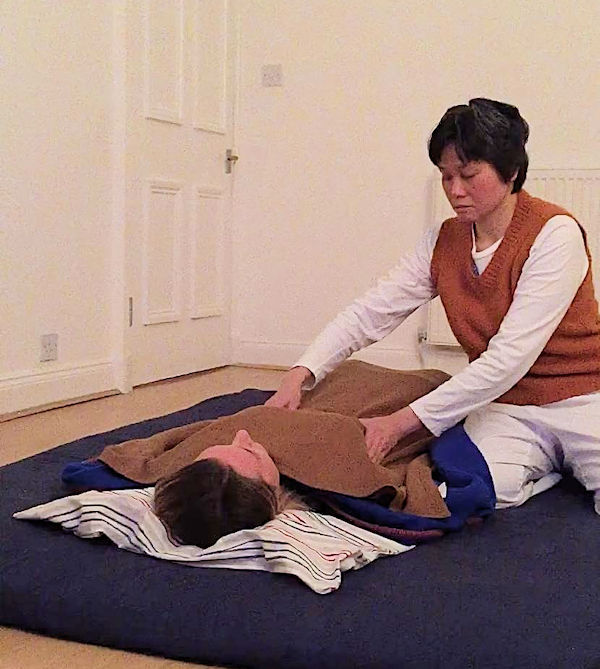
Shin Tai treatments include bone Qi activation, meridian work, fascial unwinding, craniosacral, Central Channel release and chakra techniques, to clear meningeal stress in the body. Gentle and soft tissue structural adjustments correct specific misalignments in the sacrum, hips and spine. When you support one area of the body, you are supporting the whole system.
As a practitioner and receiver, I appreciate that Shiatsu listens, observes, and supports us as we are.
Bone touch
When working with clients, I am sometimes drawn to the Small Intestine 9, 10, 11 and 12 meridian points around the houlders – scapula (shoulder blades) and clavicle (collar bones). These points are really helpful for releasing both physical and emotional tension.
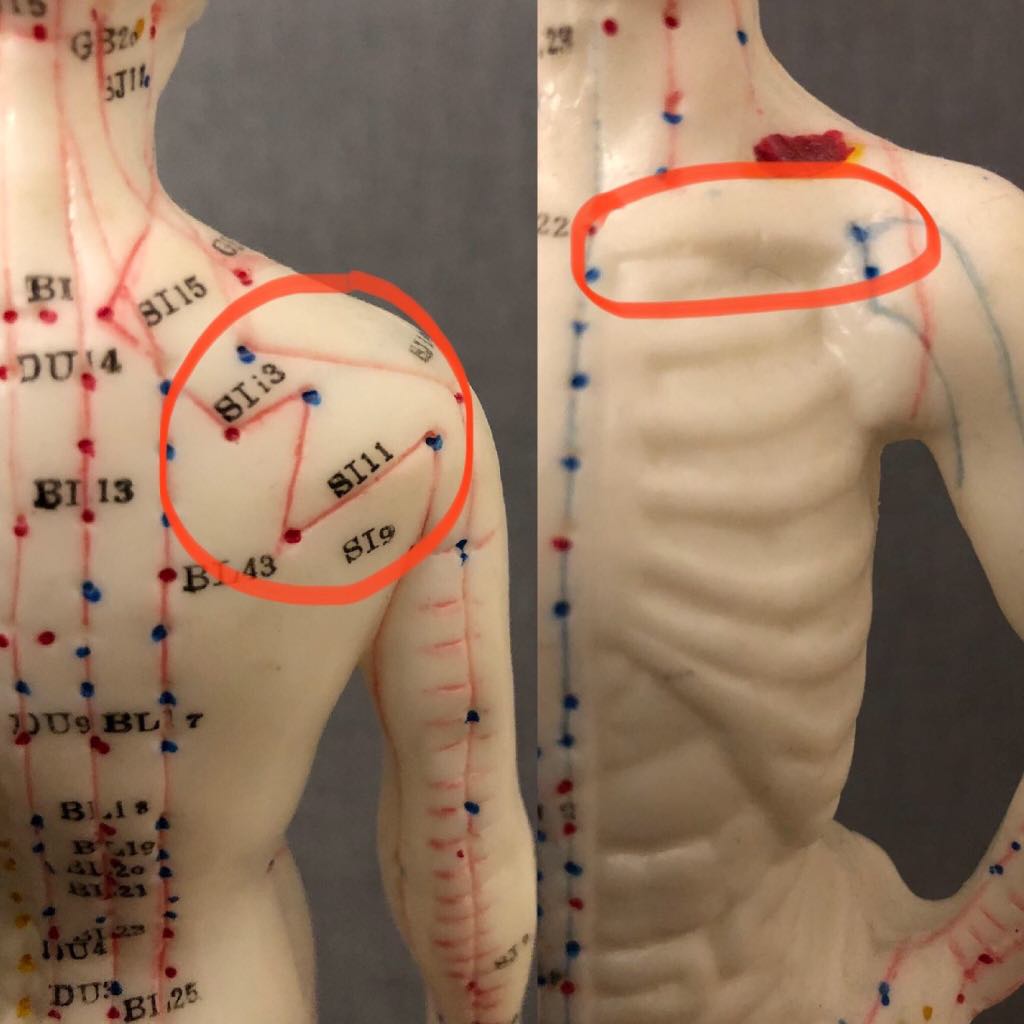
Bone is also a main shock absorber. Bone touch and working with the fascia of the bone – using gentle fascia-release techniques – is deeply supportive because it provides space for the body to release deeply held stress patterns, and to heal. We can also connect with the fascia when working down the spine.
Shiatsu can provide great relief to patients in distress from bone fractures and from nerve pain radiating down the leg. Just being with a person, listening, with gentle holding and witnessing can bring real relief and comfort.
Supporting the Kidneys
Keep your Kidneys and adrenals warm with warm foods and especially with wearing enough layers of clothes. Tea with fresh ginger, chai, or lemon juice in warm water also help our immunity by reducing acidity and inflammation in the body.
You can place your palms on the back to bring warmth and, with intention, you can also bring warmth to GV4 – known as The Gate of Vitality. This is located on the midpoint of the back, level with the waist. I see it as the pilot light of the body. Another excellent meridian point to support GV4 is BL23 which is a few thumbs width across and level with the waistline.
When you bring warmth to the Kidneys, the whole body begins to feel more at ease. The other vital Yin organs, and functions such as oxgenation, heart rate, blood circulation, digestion, immune function and lymphatic system are also supported.
Supporting the Bladder
We can also work the Yu points, located along the classical Bladder meridian, on either side of the spine. These Transporting Points govern the physical functions of all the bodily organs and therefore the whole body mentally, emotionally, and psychologically. Working the Yu points helps give us a sense of balance and wellbeing because they also support the central nervous system.

Beyond theory and diagnosis
I am always curious about what my clients present and always fascinated by what I notice in treatments. The learning never stops. Beyond theory and diagnosis, knowledge of anatomy and physiology, and years of study and clinical practice, it is my experience of life and my interest in new ways of seeing which truly inform my work. I also know from professional practice that listening is key. Sometimes, I listen to where the nervous system is at, and just be with it. As practitioners, we need to get our heads out of the way, and this is a life’s work. Healing can take place when a client feels that they are truly seen, heard, acknowledged, and met with compassion.
SELF-CARE
Foot massage
There are 33 joints, 26 bones and more than a hundred muscles, tendons and ligaments in each foot. Our feet, especially the arches of the feet, bear more than our body weight and need to be looked after. Do you know that energy can get stuck at meeting points like the joints of our feet and at the ends of our fingers, much like a traffic jam at a roundabout? A quick massage can really help to release tightness and compression in the bones, joints, tendons, muscles and ligaments in our feet. Regular massage also improves Qi and blood circulation in the feet and the body’s circulatory network. Knee work and ankle rotations, plus stretching our fingers and toes can also help to unblock any stagnation and ease movement and flow.
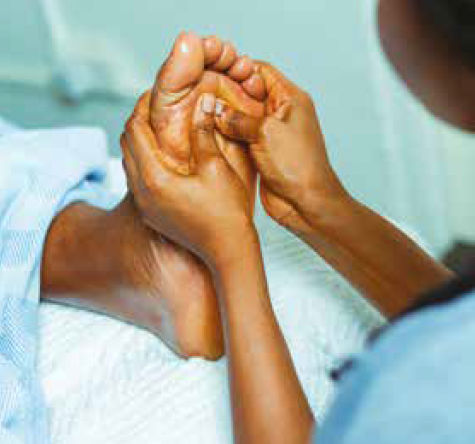
Proprioceptive exercises
Proprioceptive exercises involve specific types of movement and focus that stimulates the proprioceptive system. The proprioceptive system is like the body’s inner guidance GPS and is a part of the Central Nervous System that maintains alignment and equilibrium through the activity of specialised nerve fibres and soft tissue in the muscles, tendons, and ligaments. If you notice any areas of tension or tightness, just breathe elasticity (visualise a rubber band) into each stretch.
Proprioceptive exercises encourage us to slow down and really listen to our body’s inner wisdom. Practised overtime, we learn to develop our intuition and what feels in alignment with our Soul Path. As a Shiatsu Shin Tai practitioner, it fine tunes my ability to listen to my clients more intuitively.
Do-In (Self-Shiatsu)
These exercises engage the whole body and encourage movement and Qi flow throughout the body and meridian system. There are sequences for the head, neck, shoulders, spine, torso, ribs, hips, knees, ankles, and feet. Listen to your body and do what you can. Remember to keep your knees soft and engage your whole body as you move.

Qi Gong
Regular Qi Gong strengthens the body and Bone Qi. From Adam Hellinger (Shiatsu and Qi Gong teacher), I have learned how to gently tune in, listen and engage my whole body in each movement. In the Zhan Zhuang Qi Gong system that he teaches, we are shown how to work with what feels supportive: there is no forcing of movements and no going beyond what the body can take. This way invites spaciousness and ease in the body system.
Yin Yoga
Yin Yoga is a wonderful support for the Kidneys and Bladder. Allow your body to rest on a futon. Pause and have a rest when our body needs it. Taking in a slow breath followed by a long, sustained out breath helps our heart rate and lowers blood pressure. It encourages a calmer physiological state overall. Breathing like this, with no striving, also decreases the production of stress hormones like cortisol and activates the parasympathetic nervous system, regulates emotions, decreases anxiety, and improves mood. You may wish to place your hands on your chest or on your belly as you breathe.
Good nutrition
As we move through the seasons, we can nourish what lies deep within us with rest, warm broths, and giving ourselves the pace to pause, breathe and listen with kindness from our whole being.
Broths are just perfect for hydration levels. They are a great source of nutrition for the bones and joint health. They also aid digestion, gut health, and immune function. Bones are packed with vitamins and minerals (calcium, magnesium, potassium, phosphorus and other trace minerals, amino acids, glucosamine and chondroitin) and iodine (found in fish bones) for healthy thyroid function and metabolism. Bone marrow provides Vitamins (A and K2), minerals (zinc, iron, boron, manganese, selenium, omega-3 and omega-6 fatty acids).
For vegetarian or vegan broths, the following ingredients provide a good source of minerals: Shiitake mushrooms, seaweed/wakame (good source of iodine), turmeric, ginger root, onions, garlic, carrots, carrot peel, parsnips, celery, fennel, salt, and miso paste. Miso contains calcium, magnesium, potassium, manganese and selenium. Add beans to the broth for a stew. Beans are high in amino acids which are the building blocks of protein.

A Practical Exercise
Let’s pause for a moment and do this exercise together:
- Close your eyes
- Bring your attention to the sensation of your feet touching the ground
- Sense the verticality of your spine and your posture
- Take a deep breath through your nose. Feel the breath reach the back of your head
- Now breathe out down your neck, shoulders and arms – right down to your fingertips
- Take a breath in and fill your chest and belly Then breathe out down your hips and legs to your feet.
- Stay with these breaths for a moment. How do you feel?
Whatever you notice, be kind, gentle and compassionate towards yourself. Let your body ‘be breathed’. Breathe ease into your body. Compassion has the space for everything.
When we come back home to the body, we see that we are more than our thoughts, feelings and emotions. We see the possibility of becoming more whole in mind, body and spirit. Try being softer, one moment at a time. Keep well.
Notes
- [1] The Web That Has No Weaver; Ted Kaptchuk, 2000, McGraw Hill publisher
- [2] The Extraordinary Fu (Chinese Medicine form the classics); Claude Larre and Elisabeth Rochat de la Vallée, 2003, Monkey Press
- [3] Life in the Bones – Exploring Zero Balancing’s Skeletal Side of the Musculoskeletal Equation – A biography of Dr Fritz Smith; David Lauterstein, 2017, Upledger Productions
- [4] The Memory Palace of Bones: Exploring Embodiment Through the Skeletal System; Dr Jeff Rockwell & David Lauterstein, 2023, Jessica Kingsley Publishers
- [5] Lucille Clifton (J1936 – 2010) was an American poet, writer, and educator from Buffalo, New York. From 1979 to 1985 she was Poet Laureate of Maryland . Clifton was a finalist twice for the Pulitzer Prize for poetry.
Author
- Bone Is More Than a Curious Organ - 24 October 2024








